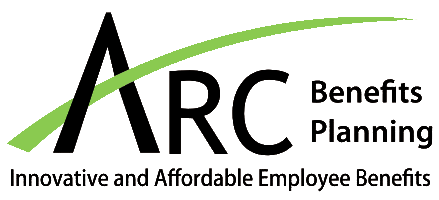
GROUP RETIREMENT PLANS
With many options to choose from the goal of group retirement plans is simple: they help employees achieve their retirement savings goals.

THREE IMPORTANT ADVANTAGES OF GROUP RETIREMENT PLANS
- Pension plans have lower fees than most people can obtain for their own individual investments. For example, defined contribution plan funds typically charge relatively lower investment management fees than would be available to an individual.
- Employers typically also contribute to employee pension plans. Employees choosing not to join a plan or contribute can be like saying no to free money.
- Plans require you to save, and take away guesswork and many of the risks of trying to “time the market” (predict market up-and downturns). It can be difficult to take the time each month to set aside money for retirement savings, but pension plans provide valuable discipline while removing emotion from your investment decisions, and helping you stay invested for the long term, to make the most of your investments For example, defined contribution plan members can benefit from dollar-cost averaging when markets are down. By automatically investing a set amount regularly, you’re often able to buy more when prices are lower, instead of being tempted to pull out of the market.
THERE ARE TWO BASIC KINDS OF PLANS

- Defined benefit plans provide participating employees with a level of retirement income based on a calculation that typically factors in years of service with the employer and salary earned. The employee may contribute to the plan during his or her time as an employee with the organization. Employer and employee contributions are pooled in a pension fund and invested. The pension plan sponsor (the employer) is responsible for ensuring that the plan can pay participating employees the required retirement income.
- Defined contribution plans allow organizations to sponsor plans without bearing the investment risk that comes with a defined benefit plan. Each participating employee has his or her own account. Employer and member contributions are invested, usually based on investment options selected by the participating employee. Retirement income is determined by how investments perform. Defined contribution pension plans, group registered retirement savings plans, employee share purchase plans, deferred profit-sharing plans and group tax-free savings account plans are all examples of defined contribution plan structures.
What happens if I leave my employer?
If you’re leaving a plan for any reason, it can be useful to talk to a financial advisor. You’ll have several options, many of which are complex. With some plans, you may need to work for your employer or be a member of the pension plan for a specified period before you become vested. In a vested plan employees are entitled to receive the benefits of their own contributions and those of their employer under the plan, without losing employer’s contributions. If you leave before the benefits vest, you will receive only the value of your own contributions and earnings. If your benefits are vested when you leave, you have several options, depending on the applicable provincial legislation and the plan. You may be able to:- Leave your assets in the plan you’re exiting.
- Transfer the value (“commuted value”) of your pension to another pension plan, if you’re joining another one that allows such a transfer.
- Transfer your commuted value to a registered retirement savings plan or other plan, which may be locked in (meaning you can’t withdraw the money until retirement).
- Take the cash value (if it’s not locked in).
Do I pay a fee to participate in a plan?
- Defined benefit plan members do not pay fees directly, although the pension plan may pay fees for such things as investment management, actuarial services, etc., out of the pension funds.
- Defined contribution plan members may pay fees for investment management, plan administration and other services. Often these fees are built into the management expense charges of the plan. These fees are typically low compared to those charged to retail account-holders outside an employer-sponsored plan.
CONTACT US FOR A NO OBLIGATION QUOTE


ST THOMAS OFFICE
450 Sunset Dr., Ste 247
St. Thomas, ON N5R 5V1
tel: 519-637-0181 x204
fax: 226-781-0444
